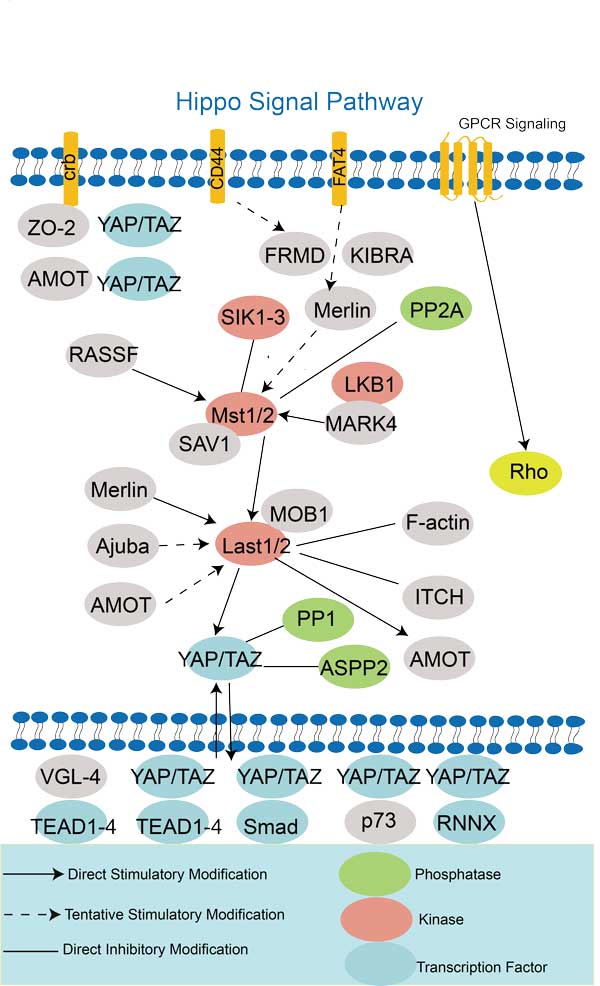AMOT
-
Official Full Name
angiomotin -
Overview
This gene belongs to the motin family of angiostatin binding proteins characterized by conserved coiled-coil domains and C-terminal PDZ binding motifs. The encoded protein is expressed predominantly in endothelial cells of capillaries as well as larger vessels of the placenta where it may mediate the inhibitory effect of angiostatin on tube formation and the migration of endothelial cells toward growth factors during the formation of new blood vessels. Alternative splicing results in multiple transcript variants encoding different isoforms. [provided by RefSeq, Jul 2008] -
Synonyms
AMOT;angiomotin;angiomotin p80 isoform;angiomotin p130 isoform
Recombinant Proteins
- Mouse
- Human
- Mammalian Cells
- E.coli
- Wheat Germ
- HEK293
- In Vitro Cell Free System
- His
- Non
- GST
- DDK
- Myc
- Avi
- Fc
Involved Pathway
AMOT involved in several pathways and played different roles in them. We selected most pathways AMOT participated on our site, such as , which may be useful for your reference. Also, other proteins which involved in the same pathway with AMOT were listed below. Creative BioMart supplied nearly all the proteins listed, you can search them on our site.
| Pathway Name | Pathway Related Protein |
|---|
Protein Function
AMOT has several biochemical functions, for example, . Some of the functions are cooperated with other proteins, some of the functions could acted by AMOT itself. We selected most functions AMOT had, and list some proteins which have the same functions with AMOT. You can find most of the proteins on our site.
| Function | Related Protein |
|---|
Interacting Protein
AMOT has direct interactions with proteins and molecules. Those interactions were detected by several methods such as yeast two hybrid, co-IP, pull-down and so on. We selected proteins and molecules interacted with AMOT here. Most of them are supplied by our site. Hope this information will be useful for your research of AMOT.
NF2;MPP5;YAP1;AMOTL1
AMOT Related Signal Pathway
Resources
Related Services
Related Products
References
- Chan, SW; Lim, CJ; et al. Actin-binding and Cell Proliferation Activities of Angiomotin Family Members Are Regulated by Hippo Pathway-mediated Phosphorylation. JOURNAL OF BIOLOGICAL CHEMISTRY 288:37296-37307(2013).
- Arigoni, M; Barutello, G; et al. A vaccine targeting angiomotin induces an antibody response which alters tumor vessel permeability and hampers the growth of established tumors. ANGIOGENESIS 15:305-316(2012).




